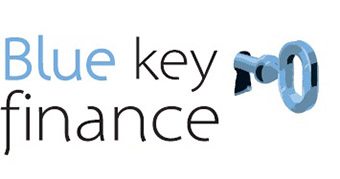What are the ATO’s concerns with SMSFs?
| Sole purpose test | For example, Trustees who are regular golfers and invest fund moneys in a golf club membership with playing rights attached would raise questions. Secondly, where Trustees are paying for children’s tertiary education through the SMSF |
| Running a business | If a SMSF is running a business, it is not being administered for the sole purpose of providing retirement benefits to members and beneficiaries. |
| Arm’s length dealings | Any dealings between a SMSF and its members or related parties must be conducted at arm’s length, i.e. they must be at prevailing commercial or market rates. |
| LRBAs | LRBAs are fine, but the existing investment restrictions continue to apply; e.g. in-house assets and the prohibition on acquiring certain assets from a related party. |
| Borrowing guarantees and contribution limits | In the event that a guarantee supporting a LRBA for a SMSF is enforced against a member, a payment by the guarantor could potentially be treated as a “contribution” and generate an excess contributions tax liability where the member’s relevant contributions cap is exceeded. |
| Investment strategy | Some SMSFs did not have an investment strategy, or if they did, they were not investing in accordance with it. |
| Record keeping | Some SMSFs kept no records of meetings at which decisions (such as revising the investment strategy) may have occurred. A small number operated without holding any meetings at all. The ATO expects minutes to be kept outlining the Trustee’s investment decisions, how they made those decisions, transaction records, statements of a SMSFs financial position, who the Trustees of a SMSF are, their consent to act as Trustees and copies of tax returns. |
| Failure to keep assets separate | The ATO has found non-compliance where the SMSF failed to maintain its assets separately from those of a business in which one or more of the Trustees were involved. In some cases, assets were not in the name of the SMSF but in the name of one of the Trustees, exposing the asset to loss if the Trustee were declared bankrupt or their business went into receivership. |
| Business real property | Although the law allows Trustees to invest 100% of the SMSFs assets in “business real property”, Trustees should give proper consideration in their investment strategy as to whether having all of a SMSFs assets in one basket represents a prudent investment strategy. |
| Holiday homes | Holiday homes leased to related parties and their value was in breach of the in-house asset rules. The ATO considers that exceedingly generous terms sometimes attaching to these leasing arrangements also suggested the arm’s length rules were being ignored. |
| Bank accounts | Some SMSF bank accounts were overdrawn and in a few cases the fund did not even have an account. |
| Loans | The ATO is concerned about loans that are unsecured, not decreasing in size, lack regular repayments or have poor documentation. Secondly, the SMSFs assets may not be used as collateral for a loan as a charge cannot be placed over the assets of a SMSF. |
| Artwork and collectables | Members cannot enjoy a benefit from the investment in art before preservation age. Therefore, it cannot be displayed in the Trustee’s home or office except under very strict conditions. Artwork or collectables can be leased to a member or other related party as long as the in-house asset rule is not breached and they are leased at commercial rates, satisfying the arm’s length rule. |
| Non-lodgement | There are a small number of SMSFs that have a poor lodgement compliance record. Member contribution statements contained in the SMSF annual return are also critical to the ATO’s administration of excess contributions tax assessments. |
| Market value reporting | Trustees are required to value SMSF assets at “market value” for reporting purposes. |
| Residency | Trustees who will be temporarily overseas for more than two years need to ensure, prior to going overseas, that their SMSF does not become a non-resident fund. |
NB: Penalties are paid by the SMSF Trustees and not the SMSF.
If you’re a Corporate Trustee of your SMSF, the Directors are jointly and severally liable to pay the penalty. This means the ATO may collect the entire penalty from any one of the Directors of the Corporate Trustee or from all Directors in various amounts, until the penalty is paid in full.
Now, this differs from individual Trustees, where each Trustee is required to pay the full amount of the penalty.
In all instances, you cannot use the assets of your SMSF to pay the penalty, and you cannot reimburse yourself from your SMSF, you will have to pay the penalty amount yourselves directly.
